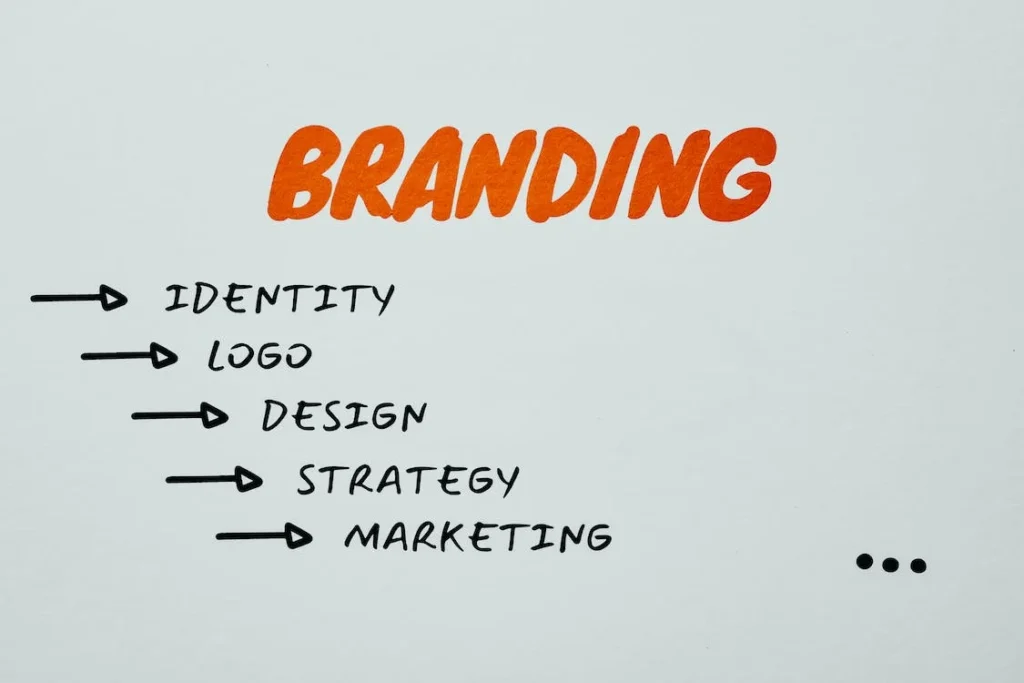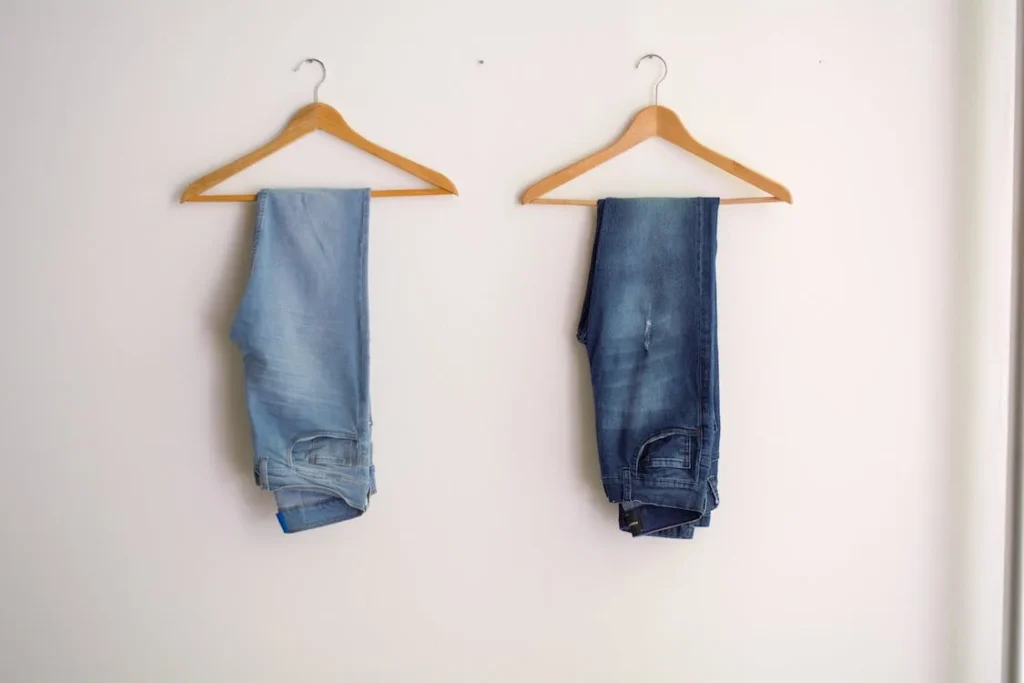This Article has been revised, edited and added to, by Poulomi Chakraborty.
- The Genesis of Footwear Branding
- The Art of Crafting Identity
- Iconic Initiations
- The Material Narrative
- Understanding Market Needs and Consumer Behavior
- Building a Unique Brand Narrative
- Strategic Collaboration and Partnership
- Emphasizing Design and Innovation
- Leveraging Technology for Enhanced Customer Experience
- Cultivating Brand Loyalty
- The Psychological Tapestry
- Crafting Aesthetic Allure
- Innovation and Technology
- The Digital Footprint
- Virtual Fittings
- AI-Powered Personalization
- Exploiting Data Analytics for Targeted Product Development
- Adopting Advanced Materials and Production Techniques
- Enhancing User Experience with Smart Footwear
- Streamlining the Supply Chain with Blockchain Technology
- Building Interactive Retail Experiences
- Sustainability – A Step Forward
- The Luxury Niche
- Concluding Steps: The Journey of Footwear Branding
In the dynamic world of fashion, where trends ebb and flow with the seasons, there lies a constant: the unequivocal importance of branding in the distinctive identity of footwear. It’s a silent symphony of design, innovation, marketing, and psychology, woven seamlessly to create not just a pair of shoes but an experience, a statement, and for many, a way of life. Let’s embark on a comprehensive journey to unveil the intricate dance of elements that forge the iconic identities of beloved shoe brands around the world.
The Genesis of Footwear Branding

The Art of Crafting Identity
Footwear branding transcends beyond logos and taglines—it is an intricate art, a strategic endeavour that encapsulates the soul, ethos, and narrative of the brand. Every stitch, color choice, material selection, and design element is a brushstroke in this grand artwork, rendering a pair of shoes much more than a piece of attire but a narrative, an experience, a silent bearer of brand’s legacy.
Iconic Initiations
Brands like Nike, Adidas, and Christian Louboutin didn’t emerge as icons overnight. Their journey from mere names to iconic identities is a tale of strategic branding, relentless innovation, and an unyielding commitment to quality. How did Nike’s ‘Swoosh’ become synonymous with unparalleled performance? What renders the red sole of Louboutin a symbol of luxury and elegance? The answers lie in the meticulous orchestration of branding elements.
The Material Narrative
Every piece of material, each stitch tells a story. The choice of leather, fabric, the intricacy of designs—all are emblematic of the brand’s commitment to quality, innovation, and aesthetic allure. In the competitive footwear market, these details are not mere additions but pivotal differentiators, silent narrators of the brand’s unyielding commitment to excellence.
Understanding Market Needs and Consumer Behavior
In the journey of branding, especially in the competitive footwear industry, understanding your target market and their behavior is fundamental. For startup founders, this means diving deep into consumer research to grasp not only the current trends but also the underlying motivations and needs of potential customers.
Engaging with your audience through surveys, focus groups, and social media can provide invaluable insights into what drives their purchasing decisions. This knowledge allows you to craft a brand that resonates on a personal level with your consumers, ensuring that your footwear not only meets but anticipates their expectations.
Building a Unique Brand Narrative
Once you have a clear understanding of your audience, the next crucial step is to develop a unique brand narrative. This is where storytelling becomes a powerful tool. Your brand’s story should encapsulate everything from your company’s origin and the inspiration behind your designs to the values that guide your operations.
This narrative will set the emotional tone for all your branding efforts and should be coherent across all platforms, from your website to your marketing campaigns. For a footwear startup, this might mean highlighting the innovation in your design process, the artisanal quality of your craftsmanship, or the ethical sourcing of your materials.
Strategic Collaboration and Partnership
Collaboration with other brands can amplify your visibility and add layers to your brand’s story. Strategic partnerships with fashion designers, popular influencers, or even causes that align with your brand’s values can create buzz and enhance credibility.
For instance, a new footwear brand might collaborate with a well-known environmental organization to produce a line of eco-friendly shoes. Not only does this attract consumers who are passionate about sustainability, but it also sets your brand apart as a responsible business.
Emphasizing Design and Innovation
At the core of footwear branding is the product itself. For startups, emphasizing innovative design and functionality can be a game-changer. Investing in research and development to offer something unique—whether it’s a never-before-seen shoe fastening system, a revolutionary material that increases comfort, or a new method that extends the footwear’s durability—helps create a strong market entry. Ensure that every product release is an event that your target audience anticipates eagerly, which will help build momentum and reinforce brand identity.
Leveraging Technology for Enhanced Customer Experience
In today’s digital age, integrating technology not only in your product but also in your branding strategy is essential. Utilize technology to enhance the customer experience, whether it’s through innovative e-commerce platforms that make purchasing seamless or through augmented reality that allows customers to try shoes virtually before buying.
Such technological integration can significantly elevate the perceived value of your brand and create a modern, forward-thinking image that appeals to today’s tech-savvy consumers.
Cultivating Brand Loyalty
Finally, the genesis of your footwear branding should lay a strong foundation for long-term customer relationships. This means beyond the initial sale, there should be continuous engagement. Implement loyalty programs, customer appreciation events, and regular communication through newsletters and social media updates.
By showing appreciation for your customers and continually engaging them in meaningful ways, you create not just repeat buyers but brand advocates who will share their positive experiences with others.
By focusing on these strategic elements from the start, startup founders can establish a strong footing in the competitive world of footwear branding. It’s about creating a brand that resonates deeply, delivers on its promises, and evolves with its customers’ needs.
This approach not only paves the way for immediate market penetration but also for sustainable growth and success in the footwear industry.
The Psychological Tapestry

Emotional Resonance
Each pair of branded shoes is often associated with a unique emotional response. This emotional connection is no accident but a meticulously crafted aspect of the brand identity. It intertwines elements of design, marketing, and consumer psychology to engender a connection that transcends the physical attributes of the footwear.
A Walk in Their Shoes
Consider the allure of a pair of Air Jordans. It’s not just about the quality of material or the finesse of design, but the aspiration to embody the legendary prowess of Michael Jordan. Every stride in those iconic shoes is symbolic, an ephemeral taste of walking in the footsteps of a legend.
The Colour Code
Colours are not mere visual elements but a complex psychological tool. A black pair of Christian Louboutin stilettos exudes elegance, power, and sophistication, while the playful hues of Vans sneakers echo the free spirit, adventure, and youthful exuberance.
Harnessing Emotional Connections through Brand Storytelling
The psychological engagement of consumers with a brand is profoundly influenced by the stories that brands tell. For startups in the footwear industry, crafting a compelling brand story is not just about narrating the company’s history; it’s about forging an emotional bond with your customers.
This story should weave together the origins, challenges, triumphs, and visions of your brand. It must resonate with the values and aspirations of your target audience, making them feel a part of your journey.
For instance, if your brand is committed to sustainability, share the passion and efforts behind making each product eco-friendly, perhaps through behind-the-scenes content or customer stories that highlight the real-world impact of choosing sustainable footwear.
Utilizing Color Psychology to Influence Perceptions
Color plays a critical role in consumer psychology, influencing perceptions and behaviors. Understanding and applying color psychology can be a strategic tool for footwear startups. Different colors evoke different feelings and associations.
For example, blue can evoke feelings of trust and security, while red might stimulate feelings of excitement and energy. Selecting the right color scheme for your footwear and branding materials can align your product with the emotional states that encourage purchasing behaviors.
A strategic approach might involve choosing colors that not only appeal to your target demographic but also reinforce the emotional undertone of your brand narrative.
Enhancing Brand Perception through Sensory Marketing
Sensory marketing is a powerful strategy to enhance consumer engagement and brand perception. For footwear brands, this can mean focusing on the tactile quality of materials, the sound of the shoe on different surfaces, or even the smell of genuine leather.
These sensory experiences can be highlighted in your physical store layout, product packaging, and marketing campaigns. Providing a multi-sensory experience can make the interaction with your brand more memorable and satisfying, which is crucial for building brand loyalty and increasing word-of-mouth referrals.
Establishing Aspirational Appeal
To tap into the aspirational aspects of consumer psychology, footwear startups should position their products not just as items of use but as symbols of the lifestyle their customers aspire to. This involves aligning your products with the identities and ambitions of your target audience.
For instance, if your target market includes young professionals, design shoes that embody qualities such as sophistication, success, and innovation. Showcasing your products in environments or alongside activities that reflect these values can motivate consumers to buy your products as a means to achieve their aspirational identities.
Creating a Community Around the Brand
Building a community around your brand can significantly amplify the psychological impact of your branding efforts. This strategy involves more than just selling products; it’s about fostering an environment where customers feel they belong to something larger than themselves.
Initiatives could include hosting events, creating online forums where customers can interact, or developing loyalty programs that reward community participation. When customers feel part of a brand’s community, their loyalty and advocacy for the brand increase, which is incredibly valuable for sustained growth.
By integrating these psychological strategies into your branding efforts, your startup can more effectively connect with customers on an emotional level. This deep connection not only drives sales but also builds a durable brand loyalty that can sustain your business as it grows and evolves in the competitive footwear market.
Crafting Aesthetic Allure

Design Philosophy
In the world of footwear, design is a language, a silent communicator of the brand’s essence. It’s an intricate ballet of lines, curves, textures, and forms that come together to create a visual narrative echoing the brand’s identity.
The Emblematic Swoosh
Nike’s ‘Swoosh’ is not just a logo but a symbol of motion, speed, and triumph. It’s a visual representation of the brand’s commitment to fostering athletic excellence, a testament to the relentless pursuit of victory.
Bespoke Elegance
On the other end of the spectrum, the intricate craftsmanship of a pair of bespoke leather brogues from a brand like John Lobb narrates a tale of tradition, elegance, and the bespoke luxury of personalized craftsmanship.
Emphasizing Unique Design Elements
In the world of footwear, distinguishing your brand through unique design elements can set you apart from competitors and capture the attention of potential customers. For startup founders, it’s essential to identify and emphasize design features that can become synonymous with their brand.
This could be a signature pattern, a unique material mix, or an innovative shoe closure system that enhances both aesthetics and functionality. These distinctive elements should be prominently featured in all marketing materials and product descriptions to establish a strong visual identity that customers can instantly recognize and associate with your brand.
Integrating Form and Function
While aesthetic appeal is crucial, integrating it seamlessly with functionality creates footwear that stands out in a crowded market. For startups, this means designing shoes that are not only visually appealing but also serve the practical needs of your target audience.
Whether it’s offering superior comfort, enhanced durability, or weather-resistant features, ensuring that your designs deliver on their promises is key. For example, a startup could develop a line of elegant yet ergonomically designed heels that offer enhanced comfort, appealing to professional women looking for stylish, yet wearable, office footwear. Highlighting these functional benefits alongside aesthetic features in your storytelling can significantly boost your brand’s market appeal.
Leveraging the Latest Design Technologies
Utilizing advanced design technologies such as 3D printing and computer-aided design (CAD) software can propel your footwear designs to the forefront of innovation. These technologies not only allow for more precise and complex designs but also enable rapid prototyping, speeding up the development process and allowing more room for experimentation.
For startups, this means being able to offer cutting-edge designs at a quicker pace and potentially at lower costs. Showcasing your use of such technologies can also enhance your brand’s image as a modern and innovative company, appealing to tech-savvy consumers.
Creating Visually Compelling Campaigns
To truly capitalize on the aesthetic allure of your footwear, create marketing campaigns that are visually compelling and tell a cohesive story about your brand. This involves high-quality photography, videography, and graphic design that highlight the unique aspects of your footwear in a visually engaging way.
For example, a startup could create a campaign that showcases the journey of a shoe from concept to completion, highlighting the craftsmanship and attention to detail. These campaigns should be optimized for various platforms, from social media to traditional advertising channels, ensuring they capture the essence of your brand and appeal to your target demographic.
Fostering Emotional Engagement through Visuals
Visuals are not just about showing a product; they are about evoking an emotional response. Use color psychology, imagery, and thematic elements in your visual content to create an emotional connection with your audience. For instance, if your brand values adventure and outdoor activities, use imagery that features dynamic landscapes and adventurous settings to resonate with like-minded consumers.
This not only enhances the aesthetic appeal of your products but also aligns them with the lifestyles and values of your target customers, making your footwear an integral part of their identity.
By focusing on these strategic elements of design and presentation, footwear startups can craft an aesthetic allure that not only draws attention but also creates a lasting impression on consumers. This approach ensures that your products are not just seen but remembered, paving the way for brand loyalty and success in the competitive footwear industry.

Related: Check out our free SEO suite

Innovation and Technology
The Digital Footprint
In today’s era, the boundary between the physical and digital worlds is increasingly blurring. Footwear brands are leveraging technology to create immersive, personalized, and interactive experiences, turning the process of purchasing a pair of shoes into an engaging journey.
Virtual Fittings
Brands like Adidas and Nike are harnessing Augmented Reality (AR) to offer virtual fittings. Customers can visualize how shoes will look on their feet from the comfort of their homes, bridging the experiential gap in online shopping.
AI-Powered Personalization
Artificial Intelligence (AI) is not a futuristic concept but a present-day reality. AI-powered algorithms analyze customer preferences and behaviors to offer personalized recommendations, enhancing the shopping experience and fostering brand loyalty.
Exploiting Data Analytics for Targeted Product Development
In the modern footwear industry, the use of data analytics can provide startups with an unparalleled advantage. By analyzing data on consumer behaviors, preferences, and purchasing patterns, footwear startups can develop products that are precisely aligned with market demands.
Implementing data analytics tools to gather insights from social media, e-commerce platforms, and customer feedback can guide product development and marketing strategies, ensuring that every new model or feature meets a real consumer need.
For example, if data reveals a growing trend in eco-conscious purchasing, a startup might focus on developing a line of shoes made from sustainable materials.
Adopting Advanced Materials and Production Techniques
The adoption of advanced materials and innovative production techniques can significantly enhance the performance and durability of footwear, setting a brand apart from competitors.
Startups should consider investing in research and development to explore new materials like graphene or advanced polyurethane, which can offer lighter, more durable, and more flexible footwear solutions.
Additionally, adopting techniques such as 3D knitting can not only improve product quality but also reduce waste and production time, aligning with both efficiency and environmental sustainability goals.
Enhancing User Experience with Smart Footwear
Smart footwear is a frontier that is rapidly evolving, and startups have the opportunity to lead in this space by integrating technology directly into their products. Features such as built-in sensors that track user activity and provide feedback on posture, gait, or even the health of the foot can offer significant value to consumers.
Additionally, integrating these technologies with mobile apps or other digital platforms can enhance the user experience, making footwear not just a fashion statement but a valuable tool for health and fitness.
Streamlining the Supply Chain with Blockchain Technology
Blockchain technology offers a unique opportunity for footwear startups to streamline their supply chains and ensure transparency. By using blockchain, brands can track the lifecycle of a product from raw material to retail, ensuring every step meets the brand’s standards for quality and ethical practices.
This transparency is not only appealing to consumers who are increasingly concerned about the origins and ethics of their purchases but also enhances operational efficiencies and partner relationships.
Building Interactive Retail Experiences
In an era where online shopping is predominant, creating memorable retail experiences can be a significant differentiator. Startups can leverage augmented reality (AR) and virtual reality (VR) to create interactive and immersive retail experiences, both in physical stores and online.
For example, an AR application could allow customers to see how shoes would look on their feet in various environments, or a VR setup in a store could transport them to different scenarios where they can test the footwear performance virtually.
These technologies not only enhance customer engagement but also provide a unique shopping experience that can elevate a brand above the competition.
By embracing these innovations, footwear startups can position themselves at the cutting edge of the industry. Leveraging technology not only improves product offerings and customer satisfaction but also broadcasts a message of a forward-thinking, innovative brand that is prepared to lead in the future of footwear.
Sustainability – A Step Forward

Green Soles
The modern consumer is not just looking for aesthetic appeal and comfort but is also increasingly conscious of the environmental footprint of their purchases. Brands are responding by integrating eco-friendly materials and sustainable practices in their production.
Recycled Fabrics
Adidas’ collaboration with Parley for the Oceans, resulting in sneakers made from recycled ocean plastic, is a testament to the brand’s commitment to sustainability, an aspect that’s becoming integral to its identity.
Ethical Craftsmanship
Brands like TOMS have woven social responsibility into their branding fabric. With every pair purchased, another is donated to a child in need. It’s not just footwear but a movement, an ethos that has garnered a loyal customer base.
Integrating Circular Economy Principles into Product Design
For footwear startups, adopting circular economy principles can be a game-changer. This approach not only involves using sustainable materials but also designing products with their entire lifecycle in mind.
Startups should focus on designing footwear that can be easily disassembled at the end of its life, with components that can be recycled or repurposed. By planning for the end-of-life of products, startups can reduce waste and appeal to environmentally conscious consumers.
Additionally, offering services like shoe repair or recycling programs can extend the product’s lifespan and reinforce the brand’s commitment to sustainability.
Developing Transparency in Supply Chains
Transparency is becoming increasingly important to consumers who want to know where and how their products are made. Startups should strive to build transparency into their supply chains by documenting and sharing the origins of their materials and the manufacturing processes used.
This could involve publishing detailed reports or using technology like blockchain to provide traceability. Being open about the supply chain not only builds trust with consumers but also sets a standard for accountability and ethical practices in the industry.
Harnessing Renewable Energy in Production
Another strategic step for footwear startups is to invest in renewable energy sources for their production facilities. Utilizing solar or wind power can significantly reduce the carbon footprint of manufacturing processes.
Communicating these initiatives through marketing channels can enhance the brand’s image and attract consumers who prioritize environmental responsibility. Moreover, it can lead to long-term savings on energy costs, making it a financially sound as well as an environmentally friendly strategy.
Collaborating for Sustainable Innovation
Startups often have more agility to innovate than established companies but may lack the resources for extensive research and development. Collaborating with universities, research institutions, or other companies can enable startups to explore innovative sustainable materials and technologies.
These partnerships can lead to breakthroughs in materials science, such as the development of biodegradable foams or waterless dyeing processes, that can revolutionize the industry while bolstering the brand’s position as a leader in sustainable footwear.
Educating Consumers and Advocating for Change
Finally, footwear startups have the opportunity to lead not just in terms of products but also in consumer education and advocacy. By actively engaging in discussions about sustainability, educating consumers about the environmental impact of their consumption choices, and advocating for industry-wide changes, startups can build a brand that stands for more than just footwear.
Initiatives could include hosting workshops, participating in sustainable fashion forums, or running social media campaigns that highlight sustainable practices. This approach not only increases consumer awareness and loyalty but also positions the brand as a thought leader in sustainable fashion.
By focusing on these strategic initiatives, footwear startups can not only align themselves with the increasing demand for sustainability but also contribute to the broader movement towards a more sustainable future in fashion. This commitment to sustainability can differentiate a brand, foster customer loyalty, and create long-term business resilience.
The Luxury Niche

The Craft of Exclusivity
In the luxury footwear segment, branding transcends beyond logos and designs—it encapsulates an aura of exclusivity, opulence, and artistry. Every stitch, cut, and curve is a narrative of luxury, an experience of opulence.
The Louboutin Legacy
Christian Louboutin’s red sole is not just a design element but a symbol of luxury, a visual narrative that echoes the brand’s legacy of elegance, sophistication, and exclusivity.
Bespoke Narratives
For luxury brands, personalization is not an option but a norm. The experience of owning a pair of bespoke shoes, crafted to the individual’s unique specifications, is a journey of luxury, an intimate dance of the brand with its esteemed clientele.
Mastering the Art of Limited Edition Releases
In the luxury footwear market, exclusivity can significantly enhance a brand’s appeal. Startups can leverage the strategy of limited edition releases to create a sense of urgency and exclusivity. By producing small quantities of unique designs or offering special editions for a limited time, brands can drive demand through scarcity.
These releases can be aligned with particular events, anniversaries, or collaborations, adding a story element that further increases the collectibility and desirability of the shoes. Effectively marketing these launches through select channels and VIP customer lists can maximize their impact and reinforce the luxury status of the brand.
Cultivating an Elite Customer Experience
The luxury market thrives on not just products but experiences. For startups entering this space, providing an unparalleled customer experience is crucial. This can include offering highly personalized services, such as private viewings, bespoke customization options, or exclusive in-store events.
Every point of interaction should reflect the brand’s luxury status, from the design of the retail environment to the customer service provided. This level of attention can turn ordinary purchasing moments into memorable experiences, fostering deep loyalty and enhancing brand prestige.
Leveraging Heritage and Craftsmanship
Even new brands can build a sense of heritage by focusing on craftsmanship and the artistry behind their products. By highlighting the skilled artisans, traditional techniques, or innovative processes used to create their footwear, startups can imbue their brand with a sense of timelessness and authenticity typically associated with luxury.
Telling the story of how each piece is made, perhaps through detailed content on social media or exclusive behind-the-scenes documentaries, can captivate the imagination of potential customers and position the brand alongside established luxury footwear makers.
Implementing High-Tech Personalization
As technology advances, so do the opportunities for product personalization, which is highly prized in the luxury sector. Startups might consider investing in technologies that allow customers to customize their purchases in real-time, whether through online interfaces or in-store kiosks.
This could range from selecting materials, colors, and finishes to adding monograms or choosing specific design alterations. This level of customization not only makes the product more appealing but also increases the customer’s emotional investment in the brand, as they have a hand in creating something truly unique.
Building a Prestige Network
Networking and building relationships within the luxury industry can also be a powerful strategy for startups. Collaborating with high-end fashion designers, luxury car brands, or prestigious event sponsors can elevate a brand’s profile and reach an affluent clientele.
Additionally, attending or sponsoring exclusive events, shows, and galas can provide valuable exposure and networking opportunities. Each relationship and collaboration should be carefully chosen to align with the brand’s image and target market, ensuring that each partnership enhances the brand’s luxury narrative.
By strategically implementing these approaches, luxury footwear startups can carve out a distinctive place in the competitive market. The key is not just in selling products but in crafting stories, experiences, and connections that resonate with the values and aspirations of the luxury consumer.
This strategic positioning, combined with a commitment to quality and exclusivity, can set a new luxury brand on the path to success.
Concluding Steps: The Journey of Footwear Branding
In the intricate odyssey of footwear branding, every stitch, hue, and curve is a silent narrative—a symphony of artistry, innovation, and strategic branding that echoes the brand’s ethos. It’s an ongoing dance of aesthetics, quality, and consumer experience that evolves, adapts, and resonates in the dynamic global landscape.
Brands like Nike, Adidas, Christian Louboutin, and others don’t just offer shoes; they offer an experience—a journey that transcends the tactile and visual, delving into the emotional and experiential realms. Each pair is not just a piece of attire but an emblem of identity, a silent companion in the wearer’s journey, echoing not just style but a narrative of aspirations, achievements, and individuality.
Technology, innovation, and digital evolution are not just trends but integral threads in the fabric of modern footwear branding. In the world where virtual and physical realms intertwine, brands are not just entities but experiences that unfold in every interaction, every touchpoint—be it the tactile allure of leather, the visual narrative of design, or the digital interaction in the virtual shopping aisle.
Read Next
- Niche Digital Marketing: Targeting Specific Audiences for Maximum Impact
- Digital Marketing for Local Businesses: Engaging Your Community Effectively
- The Synergy of SEO and Digital Marketing: A Winning Combination
- Digital Marketing on a Budget: Maximizing Impact with Limited Resources
- Harnessing the Power of Video in Your Digital Marketing Strategy






















Comments are closed.